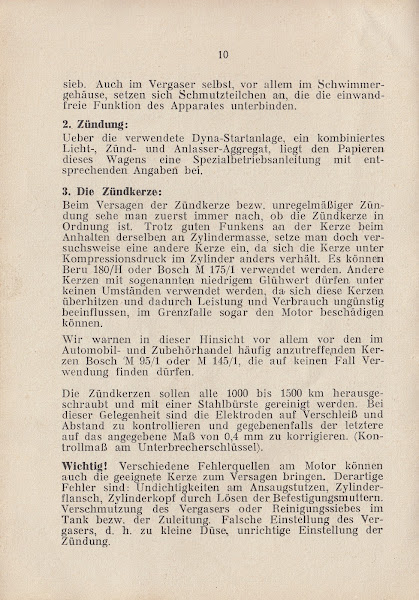I have paraphrased this from a German article in www.ruhrnachrichten.de by author, Arne Niehörster, about people's first car stories. This story comes from East Germany in the 1950s, when cars were expensive and hard to come by. Young Joachim Stückrad of Husen, near Dresden, was fortunate enough to get his hands on an old Framo Piccolo, which he and his friends enjoyed (and ultimately destroyed) during the late 50s.

Heavenly journey! Joachim and his friends on the way to the Ore Mountains. The fifth in the group rode his bike and arrived there first.
"We have never had much luck," Joachim Stückrad said to his family after the first test drive of his Framo Piccolo (built in 1938) in Dresden in 1955. But he hoped that this would change with the purchase of this car. And indeed, for the graduate engineer from Husen his dream came true for only 2000 Ostmark. Stückrad remembers rapturously: “The car was beautiful in appearance, with its edged hood, which did not even open. Inside there was also nothing except the steering column. Looking towards the back there were air vents over the engine cover. Under the engine cover you could see straight through to the road”
"The engine was sitting under a small hump in the rear seat" explained Stückrad. A 300 cubic centimeter DKW two-stroke engine delivered a mighty seven horsepower. The best part was the starter - because it did not exist - at least not when Stückrad owned it. "The previous owner has lost the starter, however a kickstarter was externally mounted beside the driver's door." If the car stalled at an intersection when driving solo there was nothing for it but to jump out and work up a bit of sweat. But when driving with his girlfriend, it was “no problem. My sweetheart hopped out, took a couple of kicks on the kickstarter and off we went on our merry way."
The Framo’s light weight presented unusual problems. "Once, we drove the Framo to a student party and some pranksters carried it up the stairs to the cafeteria," Stückrad recalls. Plop plop-plop - he drove it down the stairs again.
Vacations, however, were mostly one way journeys. "We often had to resort to other means of transport to get home." On a trip to the Saale dam, with a tent and folding boat, on a rise of almost five degrees the Framo slowed to walking pace. First his girlfriend had to get out, then the speed picked up a little. Eventually even Stückrad had to hit the road, jogging along as the car chugged away at full throttle, controlling the throttle through the open window. "Half pushed by me, she managed to reach the bottom of the mountain," says Stückrad, Next they went on to the steep, hard slopes of the Wilsdruffer mountain. This proved to be the last trip for the Framo, due to piston seizure.

http://www.ruhrnachrichten.de/44319-Husen~/Serie-Mein-erstes-Auto-Der-Framo-Piccolo-auf-wilder-Fahrt;art2576,320803
The Framo Piccolo - https://dkwautounionproject.blogspot.com/2019/10/framo-piccolo-germanys-cheapest-car-1934.html
























































